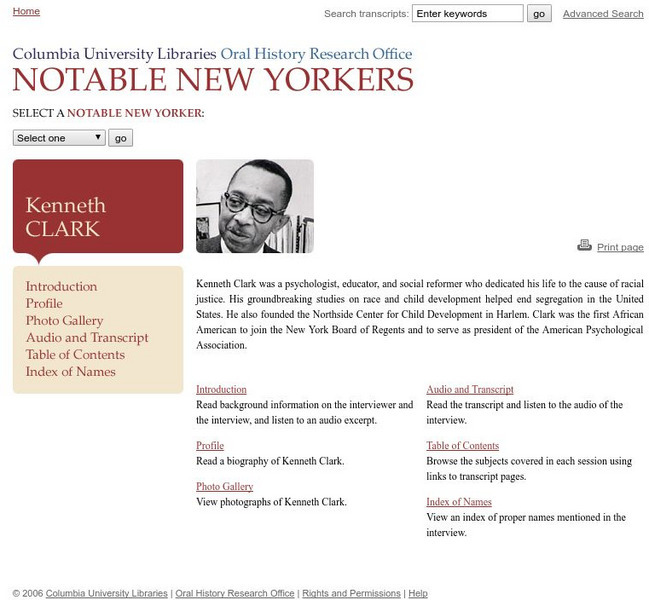Curated OER
Lesson plan: Today's young leaders
Students explain teen involvement in integrating society, and determine programs for teens in different organizations.
Columbia University
Columbia University Libraries: Notable New Yorkers: Kenneth Clark
Read about Kenneth Clark, an influential black educator and psychologist. You can also listen to the interview on which this profile is based.
Curated OER
History Matters: Walter White Considers the Causes of the 1919 Chicago Race Riot
An article by NAACP executive secretary, Walter White, discusses the eight reasons he saw for the Chicago Race Riots in July, 1919. He goes into great detail to support these causes.
Digital History
Digital History: Two Paths Towards Equality [Pdf]
During the time of rising segregation in the late 19th century two African-American leaders offered two opposite views about how to advance civil rights for African-Americans. Read about the philosophies of those leaders. Booker T....
National Endowment for the Humanities
Neh: Edsit Ement: Birth of a Nation, the Naacp, and the Balancing of Rights
In this lesson plan, learners will consider "Birth of a Nation, the NAACP, and the Balancing of Rights." The plan includes worksheets and other student materials that can be found under the resource tab.
Other
Mississippi Writers' Page: Ida B. Wells Barnett
The University of Mississippi offers a detailed biography of Ida B. Wells-Barnett (1862-1931) the famous freedom fighter is offered at this site. It includes an extensive bibliography of her works, and works about her, as well as some...
Khan Academy
Khan Academy: Brown v. Board of Education of Topeka
Discusses the famous Supreme Court decision that ended school segregation, Brown v. Board of Education of Topeka (1954).
PBS
Wnet: Thirteen: Jim Crow Stories: Ida B. Wells
A biography of the inspirational Ida B. Wells, who, as a journalist, railed against violence against African-Americans in the late 19th century and early 20th century.
Khan Academy
Khan Academy: Us History: 1945 1980: Sncc and Core
Read about the two civil rights groups that organized nonviolent protests during the 1950s and 1960s.





![Digital History: Two Paths Towards Equality [Pdf] Website Digital History: Two Paths Towards Equality [Pdf] Website](https://static.lp.lexp.cloud/images/attachment_defaults/resource/large/FPO-knovation.png)




